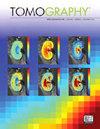Diagnostic and Therapeutic Approach to Thoracic Outlet Syndrome.
IF 2.2
4区 医学
Q2 RADIOLOGY, NUCLEAR MEDICINE & MEDICAL IMAGING
引用次数: 0
Abstract
Thoracic outlet syndrome (TOS) is a group of symptoms caused by the compression of neurovascular structures of the superior thoracic outlet. The knowledge of its clinical presentation with specific symptoms, as well as proper imaging examinations, ranging from plain radiographs to ultrasound, computed tomography and magnetic resonance imaging, may help achieve a precise diagnosis. Once TOS is recognized, proper treatment may comprise a conservative or a surgical approach.
胸廓出口综合症的诊断和治疗方法。
胸廓出口综合征(TOS)是由于胸廓出口上部的神经血管结构受到压迫而引起的一组症状。了解其临床表现和具体症状,并进行适当的影像学检查(从普通X光片到超声波、计算机断层扫描和磁共振成像),有助于获得准确的诊断。一旦确诊为 TOS,适当的治疗可包括保守治疗或手术治疗。
本文章由计算机程序翻译,如有差异,请以英文原文为准。
求助全文
约1分钟内获得全文
求助全文
来源期刊

Tomography
Medicine-Radiology, Nuclear Medicine and Imaging
CiteScore
2.70
自引率
10.50%
发文量
222
期刊介绍:
TomographyTM publishes basic (technical and pre-clinical) and clinical scientific articles which involve the advancement of imaging technologies. Tomography encompasses studies that use single or multiple imaging modalities including for example CT, US, PET, SPECT, MR and hyperpolarization technologies, as well as optical modalities (i.e. bioluminescence, photoacoustic, endomicroscopy, fiber optic imaging and optical computed tomography) in basic sciences, engineering, preclinical and clinical medicine.
Tomography also welcomes studies involving exploration and refinement of contrast mechanisms and image-derived metrics within and across modalities toward the development of novel imaging probes for image-based feedback and intervention. The use of imaging in biology and medicine provides unparalleled opportunities to noninvasively interrogate tissues to obtain real-time dynamic and quantitative information required for diagnosis and response to interventions and to follow evolving pathological conditions. As multi-modal studies and the complexities of imaging technologies themselves are ever increasing to provide advanced information to scientists and clinicians.
Tomography provides a unique publication venue allowing investigators the opportunity to more precisely communicate integrated findings related to the diverse and heterogeneous features associated with underlying anatomical, physiological, functional, metabolic and molecular genetic activities of normal and diseased tissue. Thus Tomography publishes peer-reviewed articles which involve the broad use of imaging of any tissue and disease type including both preclinical and clinical investigations. In addition, hardware/software along with chemical and molecular probe advances are welcome as they are deemed to significantly contribute towards the long-term goal of improving the overall impact of imaging on scientific and clinical discovery.
 求助内容:
求助内容: 应助结果提醒方式:
应助结果提醒方式:


